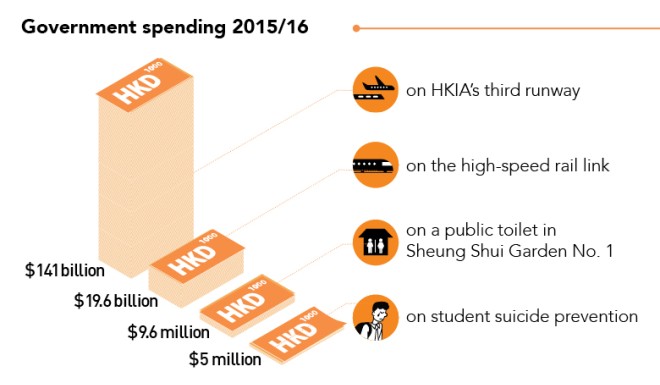
Hong Kong's Student Suicide Prevention Budget Can't Cover McDonald's Ice Cream
Under a new subsidy, schools will receive $5,000—but what can that buy?
Since the academic year began in September last year, 23 students have committed suicide—and despite the flurry of recent media coverage, this is not a new trend. Since 2011, the number of student suicides has been steadily increasing. That year, the government recorded 12 suicides—and by 2014, the number increased to 18.
To grapple with the reality of student suicides—10 of those 23 occurred since the New Year—the Education Bureau is ramping up efforts to tackle the issue with a $5 million subsidy scheme for suicide prevention in schools. However, the scheme is vague, largely underfunded and has come under scathing fire.
Read More: Hong Kong's Mentally Ill Suffocated by Stigma and Red Tape
Secretary of Education Eddie Ng Hak-kim put this plan forward on March 21. It gives each public school in Hong Kong $5,000 that they can use in any way to combat student suicides—there’s no timeframe for implementation. Ng says the subsidy can be used for seminars and activities to raise mental health awareness.

The proposal was slammed by lawmakers at the Legislative Council’s Panel on Education, criticized over what can be done with a meagre $5 million—only 0.5% of the $1 billion allocated to the “One Belt, One Road” scholarship fund for students from the mainland.
We did our own calculation: The $5,000 subsidy can't even buy each secondary student a McDonald’s ice cream sundae. There are, on average, 730 students at a secondary school. A sundae costs $7. Secondary students come out from the subsidy with $6.80—20 cents short of the sundae.
Wong Nam-fai, Education Officer at the Mental Health Association of Hong Kong, doubts that a $5,000 subsidy can go far.
“Generally speaking, a one-hour talk costs at least $2000, so what good can $5,000 do?” he questions. He says that $5,000 could accommodate 50 parents, maximum, for training courses.
Legislator Fernando Cheung Chiu-hung says there is little point in giving schools these subsidies without other support to go with it. Collaborating with civil society and mental health professionals, Cheung has moved a joint motion on a Rest Day proposal, which was passed in the Panel on Education on March 22. The Rest Day, a class suspension once or twice over an academic year, is a chance for students and teachers to “sort things out,” he says.
“The number one priority is to figure out where the pressure comes from,” says lawmaker Cheung. “Instead of organizing talks, we should let students do the talking this time.”
Read More: Hong Kong Psychiatrists Still in Low Numbers, Overworked
Education officer Wong is skeptical that individual seminars or group activities will be effective. “Marginalized parents and students often do not have the time to chat, let alone join these workshops,” Wong says, adding that it’s even more difficult to squeeze these activities into the school’s usually packed schedules.
“Half a loaf of bread is better than none,” Wong says. “But long-term planning to include mental health into the curriculum is the key to improving students’ mental health once and for all.”
Samaritans in Hong Kong says that fewer students now call for help because they rarely make phone calls anymore. More than 25% of Hong Kong’s students reached out in 1995, but last year only 4% of the city’s students reached out.

